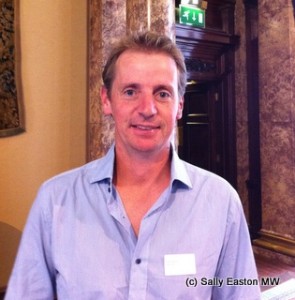Ten minutes with … Tom Carson
 Tom Carson is pushing the envelope when it comes to making pinot noir in Australia, and is a strong advocate of wines of place.
Tom Carson is pushing the envelope when it comes to making pinot noir in Australia, and is a strong advocate of wines of place.
Having graduated in 1991, his CV includes stints at Coldstream Hills and at Knappstein where he was involved with the first two vintages of Lenswood pinot noir from the Adelaide Hills. He is now the winemaker at Yabby Lake in Mornington Peninsula, where he moved in 2008 after a 12-year sojourn at Yering Station in the Yarra Valley. Amongst all of this he has worked five vintages in France, a couple in Champagne and three in Burgundy, most recently, in 2000, with Bernard Moreau in Chassagne Montrachet.
Carson said what he learnt in Burgundy was “respect for the land and the vineyard. The time-honoured wealth of knowledge in Burgundy is something you can’t pick up in a four week vintage. It comes from generations of farming. But it puts some perspective on what we’re doing in Australia. We can’t rush it.”
Thus he speaks of prospects and future in Australia, saying the Yabby Lake site “has huge potential, it seems the foundation of quality is high” and he’s just itching for the vines to age to see what they are capable of in maturity. But already he said “the wines are really precise, detailed, they have presence, purity and integrity.”
In finding those sites of potential, Carson discusses the four parameters of acid, sugar, phenolic ripeness and flavour, likening them to four clocks, saying “if they’re all running in the same time zone and at the same rate, if they all intersect at this nice point where you harvest the fruit, then you have wine that’s inherently balanced,” adding “when you have the site right, the components of the fruit seem to work in synch. As it reaches ideal ripeness, acid falling at a slow rate, the balance, the flavour is there.” It’s only when the clocks work out of synch that the winemaker needs to do something to bring back the balance.
But when the clocks are in synch, “the sites that can produce fruit that has this inherent balance, then the wines need virtually no winemaking except judicious care to be able to produce wine that reflects where it’s grown, and its balanced.” He makes it all sound so easy.
This is probably why he also said “the best wines I’ve made are the easiest. When it’s right in the vineyard and we’ve picked at what we feel is the ideal moment, they look good on vine, and every time you look at them they look good. There’s very little manipulation or invention winemaking. They tend to look after themselves.”
This is not to say that minor adjustments “at the edges may be required in some years because of the marginal climate.” It’s the cool-marginal climate that offers the opportunities to synchronise the clocks, but it doesn’t happen every year, because cool marginal can be rather unpredictable, which is why the wines reflect the vagaries of each vintage. Carson said “we haven’t added acid to chardonnay for years. With pinot noir most years we don’t, and some years we may need to add a very small amount. Like in Burgundy, usually they don’t need to chaptalise, but sometimes you need to add a tiny bit of sugar.”
Carson is deliberately seeking that reflection of vintage, of season, saying “we want the wines to reflect different personalities from the site, and primarily from the season. Of all the great wines we talk about, it’s the season that has the biggest impact on flavour, texture, weight and balance.”
And to this end, Carson needs to change the business model of the Aussie winemaker. He said “the future is the vineyard – a combination of winemaker, viticulturist and site. It’s more of a vigneron feel, with the winemaker as a piece in the puzzle, not the game changer.”
At least he’s not completely alone in this gargantuan task, there’s a growing band of admirably tall poppies in this vanguard.



